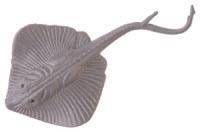
Look at the body shapes of the fish shown below.
Which one is best adapted to live in open water in the epipelagic zone, and why?
Fish A because of its streamlined body and powerful tail
Fish B because of its flattened shape and eyes on the dorsal side
Fish C because of its elongated shape and lack of pectoral fins
None of these because they are all sedentary


Answers: 2
Another question on Biology


Biology, 21.06.2019 20:00
Use the drop-down menu to match the following definitions to the corresponding terms. the total variety of organisms that live in the biosphere a group of organisms that breed and produce offspring that can breed all of the biotic and abiotic factors in an area
Answers: 1

Biology, 21.06.2019 21:00
Epinephrine is a hormone released from the adrenal gland of the body, most often in a stressful situation. it is known as the "fight-or-flight" hormone. one way that it causes a response in the body is to activate receptors on muscle cells. where are these cellular receptors located? a. on the cell membrane b. in the nucleus c. on the cell wall d. around the mitochondria
Answers: 1

Biology, 21.06.2019 23:00
The tasmanian devil, a marsupial carnivore, is facing extinction due to devil facial tumor disease (dftd) which causes bulging cancerous lumps and lesions to erupt around the face and neck — often causing enough deformation to make seeing or eating difficult. dftd has evolved into a contagious cancer, a trait that is unique among cancers. devil mating behavior involves biting around the head and neck, allowing cells from one individual — especially cells from the crumbly dftd tumors — to be transferred to the wounds or face of a new individual. this marsupial was once found across australia, but sea levels rose, isolating the tasmanian population, while the australian population went extinct. what would be an outcome of genetic isolation that is likely to have impacted the spread of dftd? a) reduced territory puts diseased individuals in greater contact with non-diseased ones. b) inbreeding results in less variation in facial features so the cancer is generally fatal. c) genetic isolation has made it difficult for scientists to develop a vaccine against dftd. d) the lack of genetic variation in the immune system of tasmanian devils minimizes resistance to the disease.
Answers: 3
You know the right answer?
Look at the body shapes of the fish shown below.
Which one is best adapted to live in open water in...
Questions

Mathematics, 17.11.2020 18:50


Spanish, 17.11.2020 18:50

English, 17.11.2020 18:50


Mathematics, 17.11.2020 18:50



Mathematics, 17.11.2020 18:50

Arts, 17.11.2020 18:50

Business, 17.11.2020 18:50

English, 17.11.2020 18:50

Geography, 17.11.2020 18:50


History, 17.11.2020 18:50

English, 17.11.2020 18:50


Social Studies, 17.11.2020 18:50


Mathematics, 17.11.2020 18:50



